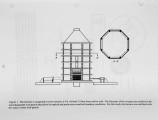| Title |
Experimental and Modeling Investigation of Turbulent Mixing in Industrial Process Heater Burners |
| Creator |
Fornaciari, Neal ; Goix, P. J.; Lutz, A. E.; Walsh, Peter M. |
| Publisher |
University of Utah |
| Date |
1996 |
| Spatial Coverage |
presented at Baltimore, Maryland |
| Abstract |
Observation of the flow in a natural gas-fired industrial process heater burner (John Zink PDA-12), by imaging the combustion air flow using Mie. scattering, showed that a high degree of mixing was achieved inside the burner quarl. Measurements of temperature and gaseous species just downstream from the burner exit were consistent with these observations. In the present investigation the mixing inside the quarl was examined in greater detail by imaging a single fuel jet. These measurements were used to support the extension and application of the Two-Stage Lagrangian (TSL) model to describe mixing and chemical reactions in the PDA burner. The entrainment of air by a single fuel jet inside the tile of the process heater burner was determined from the decay of light intensity in Mie scattering images, along the axis of the jet, as a function of excess air (air velocity). These measurements validated the self-similarity hypothesis used to describe mixing of the fuel jets in the Two-Stage Lagrangian model. The rate of entrainment by a single jet, an input to the model, was inferred from the observed jet fluid concentration decay. The residence time distribution of gas in the flow from the burner through the furnace was measured using helium as a tracer. This measurement revealed the mixedness of furnace gas on a scale comparable to the furnace volume, at the opposite extreme from the individual fuel jet mixing rates. The measurements showed that the mean residence time could be estimated using the furnace exit gas temperature as an approximation to the mean furnace temperature and that the portion of the furnace that can be usefully described as containing plug flow is smaller than might have been expected from examination of the gas temperature, composition, and velocity profiles.Observation of the flow in a natural gas-fired industrial process heater burner (John Zink PDA-12), by imaging the combustion air flow using Mie. scattering, showed that a high degree of mixing was achieved inside the burner quarl. Measurements of temperature and gaseous species just downstream from the burner exit were consistent with these observations. In the present investigation the mixing inside the quarl was examined in greater detail by imaging a single fuel jet. These measurements were used to support the extension and application of the Two-Stage Lagrangian (TSL) model to describe mixing and chemical reactions in the PDA burner. The entrainment of air by a single fuel jet inside the tile of the process heater burner was determined from the decay of light intensity in Mie scattering images, along the axis of the jet, as a function of excess air (air velocity). These measurements validated the self-similarity hypothesis used to describe mixing of the fuel jets in the Two-Stage Lagrangian model. The rate of entrainment by a single jet, an input to the model, was inferred from the observed jet fluid concentration decay. The residence time distribution of gas in the flow from the burner through the furnace was measured using helium as a tracer. This measurement revealed the mixedness of furnace gas on a scale comparable to the furnace volume, at the opposite extreme from the individual fuel jet mixing rates. The measurements showed that the mean residence time could be estimated using the furnace exit gas temperature as an approximation to the mean furnace temperature and that the portion of the furnace that can be usefully described as containing plug flow is smaller than might have been expected from examination of the gas temperature, composition, and velocity profiles. |
| Type |
Text |
| Format |
application/pdf |
| Language |
eng |
| Rights |
This material may be protected by copyright. Permission required for use in any form. For further information please contact the American Flame Research Committee. |
| Conversion Specifications |
Original scanned with Canon EOS-1Ds Mark II, 16.7 megapixel digital camera and saved as 400 ppi uncompressed TIFF, 16 bit depth. |
| Scanning Technician |
Cliodhna Davis |
| ARK |
ark:/87278/s6rn3bgf |
| Setname |
uu_afrc |
| ID |
10263 |
| Reference URL |
https://collections.lib.utah.edu/ark:/87278/s6rn3bgf |

































